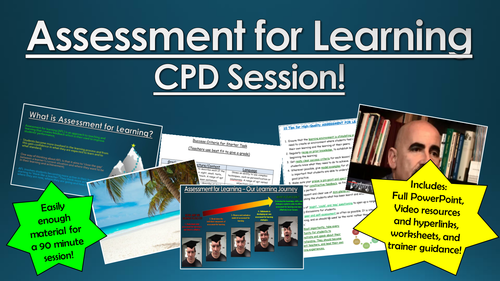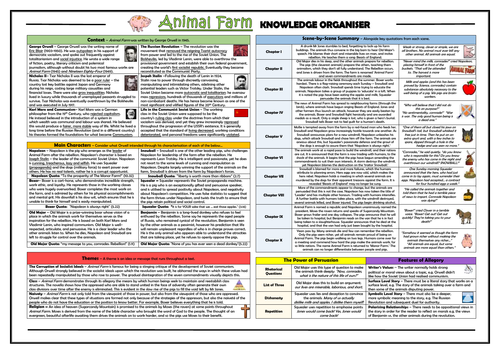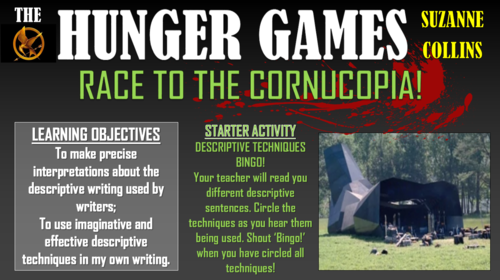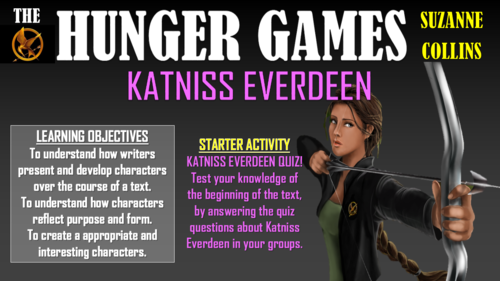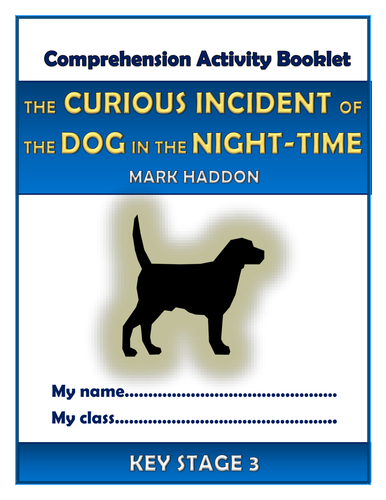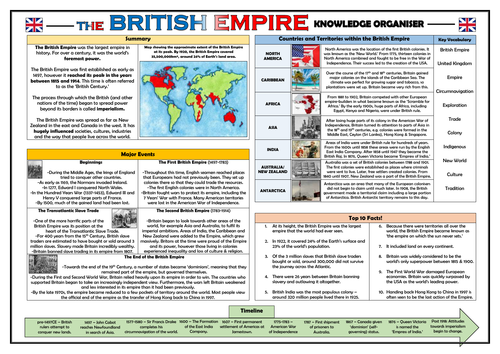
3k+Uploads
1904k+Views
2237k+Downloads
All resources
Bundle Sale

OCR Conflict Poetry Knowledge Organisers Huge Bundle!
THIS BUNDLE CONTAINS KNOWLEDGE ORGANISERS FOR ALL 15 OF THE OCR CONFLICT POEMS!
These clear, detailed and visually-appealing knowledge organisers offer complete reference points for students learning or revising the following poems from the OCR ‘Power and Conflict’ anthology:
Anthem for Doomed Youth - Wilfred Owen;
Lament - Gillian Clarke;
Honour Killing - Imtiaz Dharker;
Envy - Mary Lamb
Vergissmeinnicht - Keith Douglas
Partition - Sujata Bhatt
The Destruction of Sennacherib - Lord Byron
There’s A Certain Slant of Light - Emily Dickinson
The Man He Killed - Thomas Hardy
A Poison Tree -William Blake
What Were They Like? - Denise Levertov
Phrase Book - Jo Shapcott
The Prelude (Extract) - William Wordsworth
Flag - John Agard
Punishment - Seamus Heaney
Each organiser contains a number of detailed, clear, and colourful sections explaining the key elements of the poem:
Context;
Line-by-Line Analysis;
Poetic Devices/ Language Devices;
Themes;
Form/Structure;
Poems for Comparison;
The Poet’s Influences.
The resources are designed to be printed onto A3, and are provided as both PDFs and Word documents (so that you can edit should you wish to). All images used are licensed for commercial use and are cited on a separate document (included).
Bundle Sale

Northern Lights Big Bundle!
THIS BUNDLE CONTAINS ALL OF THE NORTHERN LIGHTS LESSONS, IN ADDITION TO THE COMPREHENSION BOOKLET AND THE KNOWLEDGE ORGANISER!
This engaging, varied, and informative scheme of learning is designed to help students gain understanding, assessment skills, and key interpretations of Philip Pullman’s ‘Northern Lights.’ Made up of a wide-range of interesting and exciting lessons, students should complete this scheme having gathered vital skills in: interpreting the significant meanings of the text, understanding the writer’s ideas within the text, identifying the traits of key characters, settings, and themes, and understanding structural and language devices.
Stimulating, visual, and easily adaptable, these lessons provide suggested learning objectives and outcomes for students of a wide-range of abilities - The vast majority of tasks are differentiated to allow for different abilities and needs in your classroom. Each lesson loosely follows this logical learning journey to ensure that students learn in bite-size steps:
Engaging
Defining/ Understanding
Identifying/Remembering
Analysing/ Creating
Peer or self evaluating.
All of the lessons are interactive, employ a variety of different teaching and learning methods and styles, and are visually-engaging. Resources, worksheets, and lesson plans are all provided.

Buddhism Knowledge Organiser!
This detailed and visually-appealing resource offers a complete reference point for students learning about/ revising their understanding of Buddhism. It contains comprehensive sections under the following headings:
-Buddhism Overview;
-Buddhist Beliefs;
-Buddhism Timeline;
-Key Vocabulary;
-Top Ten Facts;
-Answers to the Important Questions.
Key words and ideas are underlined for easy reference. The resource is designed to be printed onto A3, and is provided as both a PDF and a Word version (so that you can edit if you want to).
Bundle Sale

DT Mechanisms - Wheels and Axles Safari Buggies Big Bundle!
This engaging and purposeful series of lessons enables children to gradually develop towards constructing vehicles using wheels and axles. The resources were originally created to guide children towards building safari buggies, but the resources can easily be adapted to fit your own particular project.
The bundle contains five lessons and the knowledge organiser. The lessons included are:
Lesson 1 - Researching
Lesson 2 - Designing
Lesson 3 - Making
Lesson 4 - Constructing the Body
Lesson 5 - Evaluating
Comprehensive and colourful Powerpoint presentations, in addition to all of the worksheets/ templates needed.
These lessons were originally created for children in years 2 and 3, but may be adapted for slightly older and younger year groups.
Bundle Sale

DT Mechanisms - KS1 Sliders and Levers Bundle!
This engaging and purposeful series of lessons enables children to create working slider and lever mechanisms.
The resources include 3 lessons and an evaluation sheet (leading children through the ‘research, design, make, evaluate’ process) and a corresponding knowledge organiser.
I used a polar theme when teaching this unit, as it was our topic at the time, but the resources can easily be adapted to fit your own particular project.
Each PowerPoint is eye-catching and comprehensive, and all worksheets templates are included as in both Word and PDF.
These lessons were originally created for children in years 1-2, but may be adapted for slightly older and younger year groups.

Assessment for Learning CPD Session!
This CPD session offers an engaging and original approach to introducing or revisiting assessment for learning. Grounded in educational research, this CPD session is interactive, well-structured, and has been successfully tried and tested. The aim of the CPD session is to develop the knowledge, skills, and strategies needed in order to utilise assessment for learning even more effectively in lessons, and it achieves this by embarking upon the following learning journey:
1. Understand what assessment for learning is and why it is effective.
2. Break down the individual components of assessment for learning.
3. Observe and evaluate a model of assessment for learning
4. Collaborate in developing your own assessment for learning strategies.
Included in this pack are: Full PowerPoint presentation, videos for analysis, hyperlinks to Youtube videos, resources for CPD activities, instructions and guidance for trainers/ presenters.
All images and videos are licensed for commercial use, and are cited on the final slide.
Bundle Sale

The Woman in Black Huge Bundle!
THIS HUGE RESOURCE PACK CONTAINS ALL OF THE POPULAR WOMAN IN BLACK LESSONS, AND ALSO THE WOMAN IN BLACK KNOWLEDGE ORGANISER, THE WOMAN IN BLACK COMPREHENSION BOOKLET AND THE WOMAN IN BLACK POINTLESS GAME!
This engaging, varied, and informative scheme of learning is designed to help students gain understanding, assessment skills, and key interpretations of Susan Hill’s ghost story ‘The Woman in Black.’ Made up of a wide-range of interesting and exciting lessons, students should complete this scheme having gathered vital skills in: interpreting the significant meanings of the text, understanding the writer’s ideas within the text, analysing key characters, settings, and themes, and understanding Hill’s language devices.
Stimulating, visual, and easily adaptable, these lessons provide suggested learning objectives and outcomes for students of a wide-range of abilities - The vast majority of tasks are differentiated to allow for different abilities and needs in your classroom. Each lesson loosely follows this logical learning journey to ensure that students learn in bite-size steps:
- Engaging
- Defining/ Understanding
- Identifying/Remembering
- Analysing/ Creating
- Peer or self evaluating.
All of the lessons are interactive, employ a variety of different teaching and learning methods and styles, and are visually-engaging. Resources, worksheets, and lesson plans are all provided.
Bundle Sale

The Tempest Huge Bundle!
THIS BUNDLE CONTAINS ALL OF THE TEMPEST LESSONS, IN ADDITION TO THE COMPREHENSION ACTIVITY BOOKLET, THE TEMPEST KNOWLEDGE ORGANISER, AND THE POINTLESS GAME!
This engaging, varied, and informative scheme of learning is designed to help students gain understanding, assessment skills, and key interpretations of William Shakespeare’s ‘The Tempest.’ Made up of a wide-range of interesting and exciting lessons, students should complete this scheme having gathered vital skills in: interpreting the significant meanings of the play, understanding the writer’s ideas within the play, analysing key characters, settings, and themes, and understanding Shakespeare’s language devices.
Stimulating, visual, and easily adaptable, these lessons provide suggested learning objectives and outcomes for students of a wide-range of abilities - The vast majority of tasks are differentiated to allow for different abilities and needs in your classroom. Each lesson loosely follows this logical learning journey to ensure that students learn in bite-size steps:
Engaging
Defining/ Understanding
Identifying/Remembering
Analysing/ Creating
Peer or self evaluating.
All of the lessons are interactive, employ a variety of different teaching and learning methods and styles, and are visually-engaging. Resources, worksheets, and lesson plans are all provided.

Animal Farm Knowledge Organiser/ Revision Mat!
This detailed and visually-appealing resource offers a complete reference point for students learning or revising George Orwell's 'Animal Farm.' It contains comprehensive sections on:
- Context;
- Chapter by Chapter Summary (with quotes);
- Main Characters;
- Themes;
- Features of Allegory;
- 'The Power of Persuasion (in the speeches of Old Major and Squealer).
Key words and ideas are underlined for easy reference. The resource is designed to be printed onto A3, and is provided as both a PDF and a Word version (so that you can edit if you want to). All images used are licensed for commercial use and are cited on a separate document (included).

The Hunger Games - Race to the Cornucopia! (Descriptive Writing Lesson)
This engaging and informative lesson enables students to compose sophisticated, imaginative creative writing, through producing a first person account about competing in the opening stages of The Hunger Games. In order to do so, students first analyse the descriptive writing devices and sentence structures used by Suzanne Collins in Chapter 11 of The Hunger Games - the section in which the Hunger Games commence – before applying what they have learnt to their own compositions.
The lesson follows a step-by-step learning journey, in which children learn through:
Defining each of the different types of descriptive devices, through playing a fun, interactive bingo game;
Reading an extract from Chapter 11 of the text (provided) which describes the moments immediately before and after the Hunger Games commence;
Identifying the language techniques used in the extract to paint an image of place in the minds of the readers, and to create the desired atmosphere;
Analysing the effectiveness of each of Collins’ descriptive devices;
Analysing the sentence structures and lengths employed by Collins in the extract;
Creating their own first-person description of the horrific moments at the Cornucopia, before and after the Hunger Games begin;
Peer assessing each other’s learning attempts.
Included is:
Whole lesson PowerPoint - colourful and comprehensive;
Bingo Cards for the starter activity (and host instructions/ questions);’
Extract from Chapter 11 of The Hunger Games;
Structure strips to support the descriptive writing;
Writing to Describe Helpsheet to support the descriptive writing;
Comprehensive Lesson Plan.
All resources are provided in Word (for easy editing) and PDF (to ensure formatting remains fixed between different computers).
There are also opportunities for group learning, speaking and listening, peer assessment, and whole class discussion. I originally used these resources with year 8 classes, however colleagues have used them for between years 5 and 10 with some adaptations.
All images are licensed for commercial use, and image rights are listed on the last page of the presentation.

The Hunger Games - Katniss Everdeen!
This engaging and informative lesson enables students to understand how the lead protagonist of Suzanne Collins’ ‘The Hunger Games’ – Katniss Everdeen - develops as a character throughout the novel. In doing so, students learn how she develops and acquires the key skills, characteristics, beliefs, and values to become the complete dystopian heroine.
The lesson follows a step-by-step learning journey, in which children learn through:
Comprehending how Katniss is initially introduced to the reader;
Reading extracts from Chapters 3, 7 and 14 of The Hunger Games, identifying how Katniss’ character develops;
Analysing how her character fits the role of the ‘Dystopian Hero/Heroine’, and matching her traits to the different features of this character form;
Applying their understanding by creating their own Dystopian Hero/Heroine;
Self assessing their learning attempts.
Included is:
Whole lesson PowerPoint - colourful and comprehensive;’
Extracts from The Hunger Games (from Chapters 3, 7, and 14);
Character Profile for Katniss Everdeen;
Blank Template for Creating a Dystopian Hero/Heroine;
A comprehensive lesson plan;
All resources are provided in Word (for easy editing) and PDF (to ensure formatting remains fixed between different computers).
There are also opportunities for group learning, speaking and listening, peer assessment, and whole class discussion. I originally used these resources with year 8 classes, however colleagues have used them for between years 5 and 10 with some adaptations.
All images are licensed for commercial use, and image rights are listed on the last page of the presentation.
Bundle Sale

The Curious Incident of the Dog in the Night-time - Big Bundle!
This resource bundle contains all of the ‘Curious Incident of the Dog in the Night-time’ lessons, the comprehension activities booklet and the knowledge organiser!
The engaging and thought-provoking series of lessons has been devised to provide students with a well-rounded, secure understanding of the text. The entire novel is broken down in to 7 double lesson packs, meaning that there is a total of 14 individual activity sets here.
The Opening Chapters (2-19);
Chapters 23 to 47
Chapters 53 to 83
Chapters 89 to 113
Chapters 127 to 157
Chapters 163 to 197
The End of the Novel (199 to 233).
The comprehensive and colourful PowerPoint presentations guide students through a wide range of activities, including those designed to enhance the following skills: retrieval, understanding vocabulary, inference, explanation, summarising, sequencing, analaysis and deeper thinking activities.
The resources are suitable for students in either KS3 or KS4, depending upon the individual context of the school and students.

Pointless - Template to Create Your Own Games!
Template for you to create your own Pointless games - whatever subject or topic you are teaching!
Based on the popular game show 'Pointless', this resource is perfect for use as a starter activity, plenary, or revision tool. Editable, so that you can change to any other topic or change the questions/answers. Containing almost 30 slides of sound clips, engaging visuals, and suitably challenging questions, this resource is effective at both promoting engagement and enhancing learning.
There are several built-in rounds of questions to build students' understanding in your topics, including:
- Identifying terms from definitions
- Anagrams of key terms round
- Recalling the highest level knowledge.
The nature of the game ensures that this resource can challenge students of all levels.
NOTE: You can buy this resource alone, or in a bundle of 8 Pointless games, for only £1 more!

Northern Lights - Setting Descriptions!
This engaging and informative lesson enables students to make precise interpretations of the descriptive language used by Philip Pullman in his descriptions of settings in ‘Northern Lights.’ They also learn how the depiction of settings can have a profound impact upon the tone and atmosphere of a novel, and apply this understanding (along with their knowledge of the key language devices) to form their own vivid and imaginative descriptions of places.
The lesson follows a step-by-step learning journey, in which children learn through:
Understanding the power of places and settings, especially the impact that they have on atmosphere and tone;
Defining each of the different types of descriptive devices, through completing an interactive group activity;
Reading extracts from the text in which Pullman describes ‘The North’ and ‘The Bear Palace,’ and identifying the language techniques used to paint an image of place in the minds of the readers;
Analysing the effectiveness of each of Pullman’s descriptive devices;
Creating their own description of an awe-inspiring place, utilising appropriate and effective descriptive devices throughout;
Peer assessing each other’s learning attempts.
Included is:
Whole lesson PowerPoint - colourful and comprehensive;
Cards for the Card Sorting Activity;’
Extracts from Northern Lights;
‘Bear Palace’ analysis worksheet;
Writing to Describe Helpsheet
All resources are provided in Word (for easy editing) and PDF (to ensure formatting remains fixed between different computers).
There are also opportunities for group learning, speaking and listening, peer assessment, and whole class discussion. I originally used these resources with year 7/8 classes, however colleagues have used them for between years 5 and 10 with some adaptations. The PowerPoint is in the zip file.
All images are liensed for commercial use, and image rights are listed on the last page of the presentation.
Bundle Sale

Holes Huge Bundle!
THIS BUNDLE CONTAINS ALL OF THE HOLES LESSONS, IN ADDITION TO THE COMPREHENSION BOOKLET, THE KNOWLEDGE ORGANISER AND THE POINTLESS GAME!
This engaging, varied, and informative scheme of learning is designed to help students gain understanding, assessment skills, and key interpretations of Louis Sachar's 'Holes.' Made up of a wide-range of interesting and exciting lessons, students should complete this scheme having gathered vital skills in: interpreting the significant meanings of the text, understanding the writer's ideas within the text, identifying the traits of key characters, settings, and themes, understanding dramatic and language devices, and relating the text to its social and historical context.
Stimulating, visual, and easily adaptable, these lessons provide suggested learning objectives and outcomes for students of a wide-range of abilities - The vast majority of tasks are differentiated to allow for different abilities and needs in your classroom. Each lesson loosely follows this logical learning journey to ensure that students learn in bite-size steps:
- Engaging
- Defining/ Understanding
- Identifying/Remembering
- Analysing/ Creating
- Peer or self evaluating.
All of the lessons are interactive, employ a variety of different teaching and learning methods and styles, and are visually-engaging. Resources, worksheets, and lesson plans are all provided.

The Curious Incident of the Dog in the Night-time KS3 Comprehension Activities Booklet!
This resource booklet contains a wide range of age-appropriate, engaging, and meaningful comprehension activities for use throughout the reading of Mark Haddon's 'The Curious Incident of the Dog in the Night-time.' Teachers have found them particularly useful in comprehension or guided reading sessions. They are perfect for aiding the progress of children towards meeting the KS3 expectations within the new National Curriculum framework. Children have found these resources extremely engaging, and for teachers there is explicit information within each task regarding which comprehension strands the task is designed to demonstrate. They also relate to key extracts, characters, and themes from the story, ensuring that children gain a deep understanding of the text.
Activities within the booklet include:
- 'Context: Asperger's Syndrome' - to enable students to demonstrate that they can: 'Know the purpose, audience and context of the writing and drawing on this knowledge to support comprehension.'
- 'Haddon's Description - The Police Station' - to enable students to demonstrate that they can: 'Know how language, including figurative language, vocabulary choice, grammar, text structure and organisational features, present meaning.'
- 'Ed Boone' - to enable students to demonstrate that they can: 'Study setting, plot, and characterisation, and the effects of these.'
- 'Vocabulary Inspector' - to enable students to demonstrate that they can: 'Learn new vocabulary, relating it explicitly to known vocabulary and understanding it with the help of context and dictionaries.'
Plus many, many more activities (the booklet is 21 pages in length!) I've also added it as a PDF in case the formatting differs on your computer.
All images are licensed for commercial use, and are cited on a separate document (included).

The British Empire - Knowledge Organiser/ Revision Mat!
This clear, detailed and visually-appealing resource offers a complete reference point for students learning or revising knowledge relating to the British Empire. There are comprehensive sections on:
-British Empire Overview;
-British Empire Map;
-Major Events/ Stages;
-Timeline;
-Countries/ Territories in the British Empire;
-Key Vocabulary;
-Top Ten British Empire Facts.
The resource is designed to be printed onto A3 or A4, and is provided as both a PDF and a Word version (so that you can edit if you want to). All images used are licensed for commercial use and are cited on a separate document (included). It is most suitable for students in lower KS3/ upper KS2.

Churches - The Features of Churches!
In this lesson, students learn about the key features of Anglican churches.
Some of the features covered include: the font, the altar, the pulpit, the lecturn, the nave, the crucifix and stained glass windows. Students learn about the key purpose of the features, and where they can be found in the church.
Students also begin to comprehend what the features symbolise.
This resource pack contains a comprehensive 16-slide Powerpoint, alongside an eye-catching worksheet. Two extension activities are provided in order to challenge higher ability learners.
In the past, I have used this lesson with children from across Key Stage 2 - the key learning is aligned with NC expectations for RE, and also the content prescribed by most diocese regions. All images are licensed for commercial use, and are cited on the final slide.
Bundle Sale

Julius Caesar - William Shakespeare - Big Bundle!
THIS BUNDLE CONTAINS ALL OF THE JULIUS CAESAR LESSONS, IN ADDITION TO THE COMPREHENSION ACTIVITY BOOKLET, AND THE JULIUS CAESAR KNOWLEDGE ORGANISER!
This engaging, varied, and informative scheme of learning is designed to help students gain understanding, assessment skills, and key interpretations of William Shakespeare’s ‘Julius Caesar.’ Made up of a wide-range of interesting and exciting lessons, students should complete this scheme having gathered vital skills in: interpreting the significant meanings of the play, understanding the writer’s ideas within the play, analysing key characters, settings, and themes, and understanding Shakespeare’s language devices.
Included is:
Julius Caesar Knowledge Organiser
Julius Caesar Comprehension Bundle
…and the lessons…
-Understanding Historical Context;
-Act 1 Scene 1 - The Play Opening;
-Act 1 Scene 2 - The Feast of Lupercal;
-Act 3 Scene 1 - The Assassination Scene;
-Act 3 Scene 2 - Mark Antony’s Speech;
-Act 4 Scene 3 - The Ghost of Caesar;
-Act 5 Scene 5 - Brutus: The Tragic Hero.
Stimulating, visual, and easily adaptable, these lessons provide suggested learning objectives and outcomes for students of a wide-range of abilities - The vast majority of tasks are differentiated to allow for different abilities and needs in your classroom. Each lesson loosely follows this logical learning journey to ensure that students learn in bite-size steps:
Engaging
Defining/ Understanding
Identifying/Remembering
Analysing/ Creating
Peer or self evaluating.
All of the lessons are interactive, employ a variety of different teaching and learning methods and styles, and are visually-engaging. Resources, worksheets, and lesson plans are all provided.
Bundle Sale

Power and Conflict Poetry Knowledge Organisers Huge Bundle!
THIS BUNDLE CONTAINS KNOWLEDGE ORGANISERS FOR ALL 15 OF THE POWER AND CONFLICT POEMS!
These clear, detailed and visually-appealing knowledge organisers offer complete reference points for students learning or revising the following poems from the ‘Power and Conflict’ anthology:
Exposure - Wilfred Owen;
Bayonet Charge - Ted Hughes;
The Charge of the Light Brigade - Alfred, Lord Tennyson;
Poppies - Jane Weir
War Photographer - Carol Ann Duffy
Kamikaze - Beatrice Garland
Ozymandias - Percy Bysshe Shelley
My Last Duchess - Robert Browning
Storm on the Island - Seamus Heaney
Checking Out Me History - John Agard
Tissue - Imtiaz Dharker
Remains - Simon Armitage
The Prelude (Extract) - William Wordsworth
The Emigree - Carol Rumens
London - William Blake
Each organiser contains a number of detailed, clear, and colourful sections explaining the key elements of the poem:
Context;
Line-by-Line Analysis;
Poetic Devices/ Language Devices;
Themes;
Form/Structure;
Poems for Comparison;
The Poet’s Influences.
The resources are designed to be printed onto A3, and are provided as both PDFs and Word documents (so that you can edit should you wish to). All images used are licensed for commercial use and are cited on a separate document (included).






